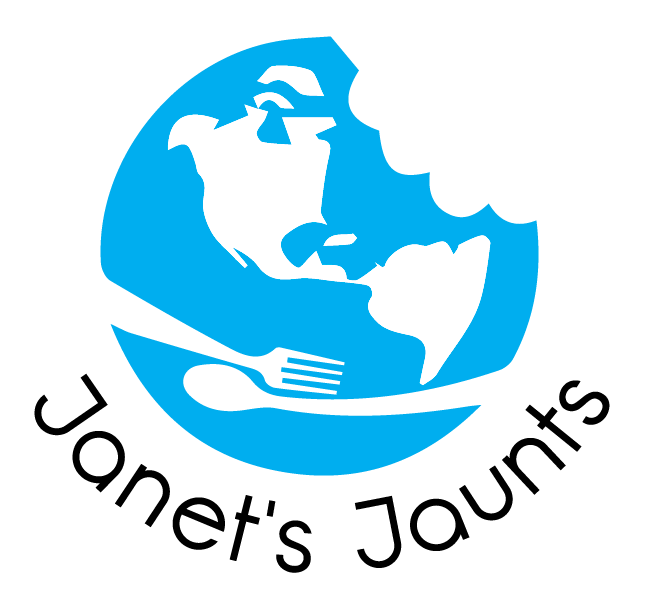Corn, potatoes and other carbohydrates, diet mainstays in Colombia, strike fear in one diabetic visitor

Guide Yohan Boyona bought this tasty fruit-imbedded ice cream bar in Raquira, Colombia. (Janet Podolak)
Although I knew I’d be dealing with Bogota’s 8,600-foot altitude, it was the food I feared most during my time in the city. Before my September trip for a professional conference, I researched the Spanish names for the food we’d likely be eating and discovered that carbohydrates prevent some altitude issues in the population.
Carbohydrate-rich foods such as 127 kinds of potatoes, corn, rice, beans, yucca and banana-like plantains are diet mainstays in Colombia. But I am a Type 2 diabetic, so they’re the very foods I need to limit in my diet.
To discover how I resolved the breathless, head-achy side effect of the altitude, read my earlier story
Early in my visit I learned to put my focus on protein and fiber and eat small portions of the carb-rich foods as I toured among the Andes villages of Boyaca to learn more about the Colombian people and their ways of doing things.
While exploring the Candelaria neighborhood of Bogota, we’d happened upon a street vendor making and selling arepas, a pastry made of cornmeal that’s offered everywhere and is available at every meal. My first arepas embraced a filling of sweet-and-salty cheese and were simply delicious — crunchy on the outside with a silky, mouth-watering interior.
In the mountains, arepas are topped with shredded chicken or goat meat, but in Colombia’s tropical regions, they’re served with spicy Caribbean shrimp or lobster, I was told. On our breakfast buffet at the Hilton Corferias, many diners topped them with mango, guava or avocado, which were among the mind-boggling array of fruits available.
Fritanga is another delicious street food found in Bogota. It’s a kind of barbecue using chorizo, pork sausage and other meats along with fried plantains and other vegetables. Our guide told us it was nicknamed “the Vitamin Ch” plate for chunchullo (a beef sausage), chorizo and chicharron (similar to pork rinds).
He suggested eating it with a cold beer. Poker is the most popular beer, but I found it rather tasteless. However, it’s super cheap at about $2.50 a pint.
Although I knew potatoes originated in this part of the world, I didn’t recognize the purple-skinned Andean potato when it was in Ajiaco, a stew-like dish we were served in Raquira, a village known for its pottery traditions. Crema, which I assumed was a type of sour cream, was served alongside, meant to be used as a topping for the stew of corn, chicken and three types of potatoes.
The village of Raquira is also where we tried the delicious ice cream on a stick that was beautifully embedded with slices of fruit. I never learned its name, but it was a popular snack among others we saw browsing among the street-side stands for pottery items made with the local clay.
One member of my group found maracuya, one of the many kinds of Colombian passion fruits, made into a pretty yellow ice cream treat.
I learned from our guide that translations for many of the fruits are impossible because they’re only found in Colombia. Among them are zapote, nispero, lulo, uchuwa, boroja, curuba, and mamocillo —many of which were also on our breakfast buffet.
Although authentic Colombian ingredients are difficult to get, there’s an entire category of arepas on the menu at Barroco, a Colombian restaurant on the second level at 3941 Erie St. in Willoughby. Begun by three couples from Colombia, its menu will give you a taste of some of the delicious foods from that country and others south of the border.
It’s important to use pre-cooked white cornmeal made for arepas if you want to make them at home. It can be purchased online at amigofoods.com. Regular cornmeal won’t work. The precooked white cornmeal can also be found at La Casita Market, 452 Storrs St. in Painesville.
The blogger credited for today’s recipe has several other versions of arepas on her website so be sure to check them out.
Recipe
Colombian Arepas
Ingredients
1 cup warm water
½ teaspoon salt
1 cup pre-cooked white cornmeal
1 tablespoon butter
1 cup shredded mozzarella cheese.
Instructions
Mix water, salt, cornmeal, butter and cheese in a bowl large enough to knead the dough.
Knead until all the ingredients are mixed and the dough has a soft consistency. If dough is too dry, add a little bit
more water. If it’s too wet, add more cornmeal.
Form balls the size of a medium orange and place between two sheets of plastic wrap. Flatten them with a rolling pin to the desired thickness.
Cut the doubt through the top plastic sheet with a bowl, glass or cookie cuter.
Remove the plastic and the excess dough and you have a perfectly shaped arepa.
Grease a griddle or pan with butter or a butter spray.
Heat on medium-high and grill the arepas 5 minutes on each side until they are golden brown.
Serve immediately.

Recent Comments